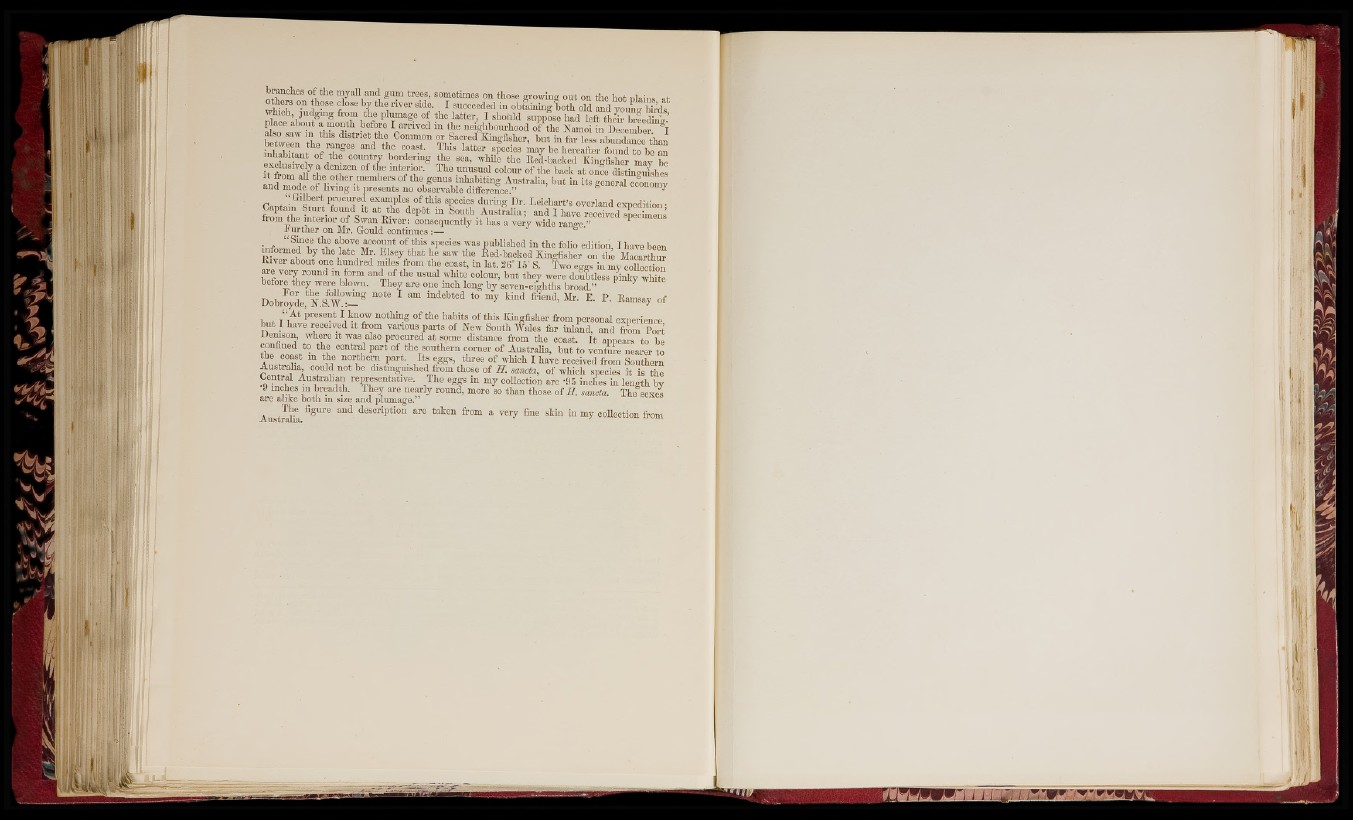
b ran d ie s o f th e myall an d gum frees, sometimes on those gi-owing o n t on tho h o t nlains at
o tee rs on those close b y th e n v e r side. I succeeded in obtaming bo th old and y o u S b Z
wfocb, ju d gm g from th e plumage o f tho la tte r, I should suppose had left then- br?ediii'a-’
place about a mo n th before I a rriv ed in tbe neighbourhood o f tho Namoi in December I
also saw m th is d is tric t th e Common o r Sacred Kingfisher, b n t in far less abundance than
h i t r / * f t TS®® “f t A® ®?“®‘ - T»fe 7 » i e s / a y be h ereafter Z i T to h f a !
in h ab itan t o f th e c o u n tiy b o rdering th e sea, whUe the Red-backed Kmgfisher may b !
exclusively a demzen o f the m te rio r. The u n u su a l colour o f th e hack a t once distiimufshes
* 7 7 o í ‘he genus in h ab itin g Au stra lia, b u t in its g eneral ec“onomv
and mode o f liv in g i t presen ts n o observable difference.” economy
j G ilb ert p ro cu red examples o f this species d u rin g Dr. L e ich a rt’s overland expedition •
Captain S tu rt found i t a t th e dépôt in South A u s tla lia ; and I have received
from the m te rio r o f Swan R iv e r; consequently i t has a v e ry ivide range ”
-Turtlier on Mr. Gould continues :—
, “ Sinoe th e above account o f th is species was p u blished in th e folio edition, I h ave been
informed b y th e late Mr. E lsey th a t he saw th e Rod-backed Kingfisher on th? Macarthur
R iv e r ab o u t one h u n d red miles from th e coast, in lat. 26" 15' S. Two eggs h i m y collection
a re v e ry ro u n d m form an d o f th e usual white colour, b u t th ey were doubtless p inky white
befoi e th ey were blown. They a re one in ch lo n g b y seven-eighths broad ”
Dobim^de, N.s“ ? r 7 “ “ f t ' * " ‘f t " f t f t ’ f t
“ A t p re sen t I know n o th in g o f th e h abits o f tliis Kingfisher from personal experience
b u t I have received i t from various p a rts o f New South Wales far miand, and fr!m Po rt
Denison, where i t was also procured a t smne distance from th e coast. I t appears to be
confined to th e c en tra l p a rt o f th e so u th e rn com e r o f AnstraUa, b u t to v en tu re nearer to
th e coast m th e n o rth e rn part.^ I ts eggs, th re e o f which I have received from Southern
A u s tra lia could n o t be distmguished from those o f f l . sancta, o i which species it is the
CentrM A u s tra lia n representa tive. The eggs iu my collection are -95 inches in len v th by
9 inches m bread th . T h ey are n early rou n d , more so th an those o f f l . sancta. The sexes
a re alike b o th in size and plumage.”
A u s t a u ! fr'iscriptioii a re tak en from a v ery fine skin in my coUection from
h
I
■i 1, 1
ll 3